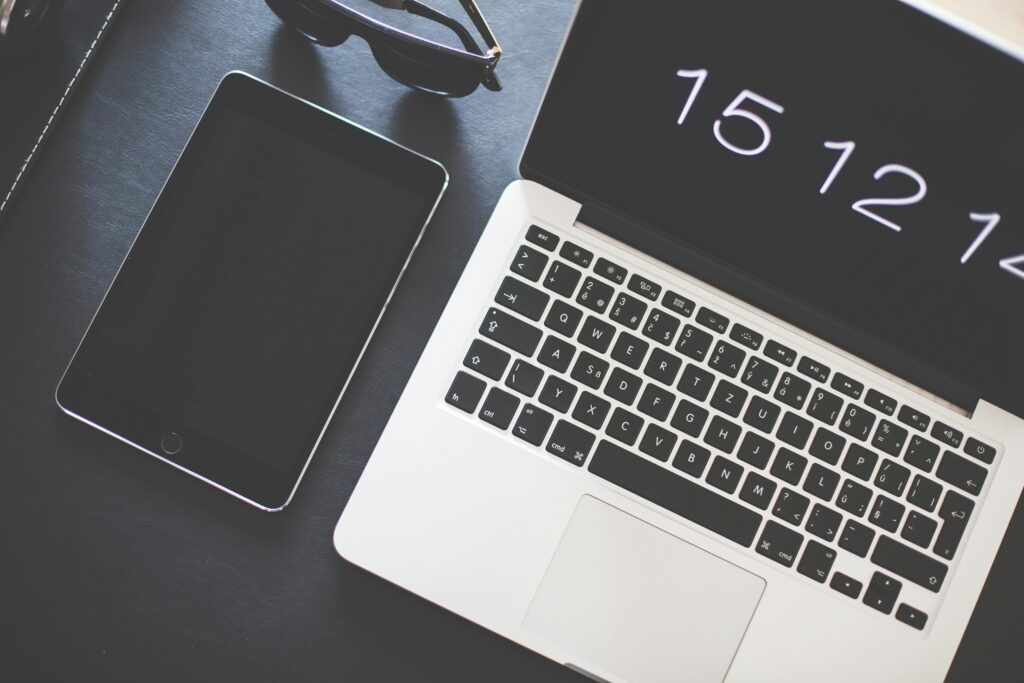Discover 10 effective strategies to reduce your screen time and improve your overall well-being. Learn how to balance technology use for a healthier lifestyle.
Did you know the average American spends over 11 hours a day on screens? This shows how deep our digital addiction is. We need to find balance in our lives. In this guide, we’ll share 10 ways to cut down screen time and live better.
Also see; How to Achieve Screen Time Reduction: Tips for Digital Wellness
Also see; Simple Steps for Screen Time Reduction: Reclaim Your Time and Balance
Key Takeaways
- Understand the physical, mental, and emotional impacts of excessive screen time
- Establish clear boundaries and set limits on your daily device usage
- Prioritize offline activities and explore new hobbies to enrich your life
- Implement periodic digital detox periods to recharge and reconnect
- Leverage technology to curb your technology use through productivity apps and website blockers
- Cultivate mindfulness and presence to be more intentional with your screen time
- Embrace quality over quantity in your screen time for a more balanced approach
Understand the Impacts of Excessive Screen Time
In our world filled with technology, screens are everywhere. They make our lives easier and connect us. But too much screen time can harm our bodies, minds, and feelings. It’s important to know the negative effects of prolonged screen exposure to use screens wisely.
Physical Effects of Prolonged Screen Exposure
Too much screen time can cause eye strain, headaches, and back pain. The blue light from screens can mess up our sleep. Sitting for long periods can hurt our muscles and bones. Knowing the dangers of too much screen use helps us stay healthy.
Mental and Emotional Consequences of Overuse
Too much screen time can also harm our minds. It can lead to more anxiety, depression, and trouble focusing. Digital devices can make it hard to concentrate and enjoy real-life activities. Understanding how screens affect our mental health is key to a balanced life.
By knowing the physical effects of screen time and the mental and emotional consequences of overuse, we can change our screen habits. This leads to a more fulfilling life.
| Physical Effects | Mental and Emotional Consequences |
|---|---|
| Eye strain Headaches Neck and back pain Sleep disturbances Musculoskeletal issues | Increased anxiety Depression Diminished attention span Disrupted focus and concentration Feelings of emotional disconnection |
Recognizing the multifaceted impacts of excessive screen time is the first step towards establishing a healthier relationship with digital devices.
Establish Boundaries and Set Limits
To keep a healthy balance with technology, setting clear boundaries is key. It’s important to manage your screen time well. This way, you can control your habits and live a more balanced life.
Setting screen time limits for yourself and your family is a good start. Choose a fair amount of time for screens each day or week. This helps you avoid endless scrolling and focus on more important things.
Creating screen time boundaries is also crucial. Make some areas or times tech-free. For example, no screens at meals or before bed. This lets you be fully present with others or relax without digital distractions.
- Make a screen time budget and track your use to establish healthy screen time habits.
- Choose areas or times without tech, like bedrooms or family activities, to manage digital device usage.
- Don’t rely on screens for constant fun or excitement to control technology use.
- Slowly cut down your screen time to reduce screen dependency and find balance in your life.
By following these steps, you can take back control of your time. This leads to a healthier tech relationship and a more rewarding life.
“The key to a healthy relationship with technology is not to eliminate it, but to use it intentionally and in moderation.”
Prioritize Offline Activities and Hobbies
In today’s world, screens can take over our lives. It’s important to find joy in offline activities and hobbies again. By focusing on engaging in offline activities, rediscovering forgotten hobbies, or exploring new interests and skills, we can improve our well-being.
Rediscover Forgotten Passions
Think back to what you loved before screens became so common. Maybe you loved reading, gardening, or hiking. Reconnecting with these forgotten passions can spark your curiosity and adventure. Doing so can also help you spend less time on screens and find a digital break.
Explore New Interests and Skills
Don’t just look back; also consider trying new things. You could take a cooking class, learn a new language, or try woodworking. By pursuing offline passions, you can develop new skills and balance your tech use with non-digital activities. This can make your life more fulfilling and balanced.
Choosing to engage in offline activities and hobbies is a great way to engage in offline activities, rediscover hobbies, explore new interests, and develop new skills. By reducing screen time and balancing tech use with non-digital activities, you can lead a healthier and more balanced life.
Implement Digital Detox Periods
In today’s world, it’s key to take breaks from screens. This helps us stay healthy and feel better. Digital detox periods let us disconnect from tech and connect with the world around us.
Benefits of Periodic Screen-Free Time
Stepping away from screens can greatly improve our health. Here are some benefits:
- Improved focus and concentration
- Reduced stress and anxiety
- Enhanced creativity and problem-solving skills
- Better sleep quality and improved overall sleep hygiene
- Increased mindfulness and presence in the moment
- Stronger interpersonal connections and deeper relationships
When we unplug from technology and take breaks from screens, we open up to new experiences. We can rediscover forgotten passions and explore new interests and skills. This leads to a more fulfilling life, improving our well-being through digital detox.
| Benefits of Digital Detox | Description |
|---|---|
| Improved Focus | Reduced digital distractions allow for better concentration and productivity. |
| Stress Reduction | Taking a break from constant screen time helps alleviate mental and emotional stress. |
| Enhanced Creativity | Unplugging from technology can foster creative thinking and problem-solving. |
| Better Sleep | Avoiding blue light exposure from screens before bed can improve sleep quality. |
| Increased Mindfulness | Screen-free time promotes present-moment awareness and connection. |
By taking breaks from screens and implementing digital detox periods, we can improve our well-being. We can live a healthier, more balanced life. Enjoy the benefits of reduced screen time and see how it positively changes your life.
Leverage Technology to Curb Technology Use
Technology can be a big problem with too much screen time. But, it can also help you use it less. Learn how apps and blockers can help you control your digital habits and have a better relationship with tech.
Productivity Apps for Screen Time Reduction
Many apps help you manage your screen time and avoid distractions. They track how much you use your devices, set limits, and block certain sites or apps. Using these digital tools to manage screen use helps you use your time online better. This makes you more productive and present in your daily life.
Website Blockers to Limit Digital Distractions
Website blockers are also great for cutting down screen time. They block certain websites or types of sites, helping you stay focused. By using website blockers to limit digital distractions, you can work or study better. This reduces time spent on mindless browsing.
It’s important to use technology to reduce screen time and take back control of your digital life. With the right productivity apps for screen time reduction and website blockers to limit digital distractions, you can use tech wisely. This leads to a healthier, more balanced life.
Cultivate Mindfulness and Presence
In today’s fast-paced world, it’s easy to get lost in screens. But, by focusing on mindfulness, you can break free from digital distractions. Mindfulness helps you stay present and reduces your addiction to screens.
Mindfulness makes you more aware of your screen use. It helps you understand why and when you use devices. This awareness lets you make better choices about your screen time, reducing addiction.
Practicing mindfulness also makes you more present. You’re less likely to grab your phone out of habit. Being present improves your connections with others and reduces the need for digital stimulation.
“Mindfulness is about being fully awake in our lives. It is about perceiving the exquisite vividness of each moment.” – Jon Kabat-Zinn
To cultivate mindfulness, try simple daily practices. Mindful breathing, body scans, or mindful device use can help. These practices help you pause, observe, and stay present. They lead to a healthier relationship with technology.
Embrace Quality Over Quantity in Screen Time
The key to a healthier tech relationship is quality over quantity screen time. Instead of just cutting down screen time, focus on being intentional and purposeful with your devices. This can make your digital life more balanced and fulfilling.
Intentional and Purposeful Device Usage
First, think about how you use your devices. Are you just scrolling or doing something that adds value to your life? Intentional device usage means knowing how you spend your screen time. It should match your values and goals.
This might mean:
- Limiting time on screens for no reason
- Choosing meaningful screen time for important tasks or hobbies
- Setting aside time for screen-free activities to balance your life
By using tech more thoughtfully, you can reduce mindless screen use and improve your tech habits through quality screen time. This change can greatly improve your well-being and help you live a healthier life.
“The quality of your life is the quality of your communication.” – Tony Robbins
The goal isn’t to cut out screens completely. It’s to make the most of the time you spend on them. Embrace quality over quantity screen time and discover the real benefits of technology in your life.
Build a Support System for Accountability
Creating a support system is key to cutting down screen time and adopting better tech habits. Having accountability partners and people who share your goals can really help. They keep you focused on your digital wellness targets.
Getting help from friends and family is a great way to start. Tell them about your plan to use less screen time. Ask them to check in and offer support. You can even do digital detox activities together.
Another good idea is to find a community for healthy tech habits. Look for online or local groups that focus on digital wellness. Join in challenges, share tips, and support each other.
Having a support network for digital wellness keeps you motivated and helps you overcome hurdles. With a community that backs your goals, you’re more likely to achieve a healthier lifestyle.
| Strategies for Building a Support System | Benefits of a Support Network |
|---|---|
| Enlist help from friends and family Join online or local digital wellness groups Participate in group challenges and discussions Share tips and strategies with like-minded individuals | Increased motivation and accountability Overcome obstacles and challenges together Learn from the experiences of others Develop a sense of community and support Sustainable changes to screen time habits |
“When you have a strong support system, you’re more likely to succeed in making lasting changes to your screen time habits.”
Building a support system for screen time reduction helps you stay on track. You get encouragement and learn from others on the same path. Use community power to build lasting, healthy tech habits that boost your well-being.
Develop Healthy Sleep Habits
Creating good sleep habits is key to cutting down screen time and boosting your health. Sleep is vital for your body and mind. It helps your body work right and keeps you feeling good.
Importance of Sleep for Overall Well-being
Sleep helps your body do many important things, like controlling hormones and keeping your mind sharp. When you sleep well, you feel more awake, happy, and smart. But, not enough sleep can make you tired, hard to focus, and even risk serious health problems.
To sleep better, set a regular bedtime and have a calm bedtime routine. Avoid screens before bed to help your body make melatonin. This hormone helps you sleep well and feel refreshed.
FAQ
What are the physical effects of prolonged screen exposure?
Too much screen time can cause eye strain and headaches. It can also lead to neck and shoulder pain. Plus, it can make you slouch.
How can excessive screen time impact mental and emotional well-being?
Too much screen time can make you feel anxious and depressed. It can also shorten your attention span. And it can make you feel lonely.
How can I establish healthy boundaries and set limits on my screen time?
To control your screen time, make a schedule. Use apps or blockers to stay focused. And set reminders to take breaks.
What offline activities and hobbies can I explore to reduce my screen time?
Try reading, gardening, or creative hobbies again. Or, learn something new like a language. You can also get active.
What are the benefits of taking regular digital detox periods?
Digital detox can improve your focus and reduce stress. It can also make you feel better overall.
How can I use technology to help curb my technology use?
Use apps and blockers to limit distractions. This can help you control your device use better.
How can cultivating mindfulness and presence help reduce my screen time?
Mindfulness helps you notice when you’re on screens. This lets you choose how you use devices more wisely.
How can I shift my focus from the quantity to the quality of my screen time?
Use devices with purpose. Make sure your screen time is meaningful and helps you achieve your goals.
How can I build a support system to help me stay accountable in reducing my screen time?
Get friends and family involved. They can support and encourage you to use screens less.
Why is it important to develop healthy sleep habits as part of reducing screen time?
Avoid screens before bed to sleep better. Good sleep helps you stay healthy and reduces screen time’s negative effects.



